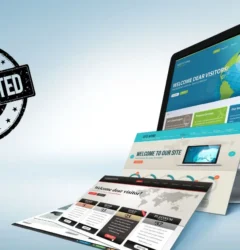15 May

If you’re a WordPress user, you probably know that plugins are a crucial aspect of the platform. They allow you to add new features and functionality to your website with ease. However, with thousands of plugins available, it can be challenging to determine how many you should have. In this comprehensive guide, we’ll explore the ideal number of WordPress plugins and provide you with tips on how to manage them effectively.
What are WordPress Plugins?
Before we dive into the ideal number of WordPress plugins, let’s define what they are. In simple terms, plugins are pieces of software that you can install on your WordPress website to add new features and functionality. They are designed to work seamlessly with WordPress, allowing you to customize your website without any coding skills.
Types of WordPress Plugins
There are various types of WordPress plugins available, including:
- Security plugins
- SEO plugins
- Backup plugins
- Contact form plugins
- E-commerce plugins
- Social media plugins
- Performance optimization plugins
- And many more
How WordPress Plugins Work
WordPress plugins work by adding code to your website’s files, allowing them to modify or extend the existing functionality. When you install a plugin, it becomes part of your website, and you can configure it to suit your needs.
How to Install WordPress Plugins
Installing WordPress plugins is easy. You can do it directly from your WordPress dashboard by following these steps:
- Navigate to the “Plugins” section of your WordPress dashboard.
- Click “Add New.”
- Use the search bar to find the plugin you want to install.
- Click “Install Now” and wait for the plugin to download.
- Once the plugin is installed, click “Activate” to start using it.
The Pros and Cons of Using WordPress Plugins
While plugins offer numerous benefits, they also have their downsides. Here are some of the pros and cons of using WordPress plugins:
Advantages of Using WordPress Plugins
- They add functionality to your website without any coding skills.
- They are easy to install and use.
- They can save you time and money by avoiding the need to hire a developer.
- They are affordable, with many plugins available for free.
Disadvantages of Using WordPress Plugins
- They can slow down your website’s performance if you have too many installed.
- They can cause conflicts with other plugins or your WordPress theme.
- They can be a security risk if they are not kept up-to-date.
- They can be overwhelming, with thousands of options available, making it hard to choose the right one.
How to Choose the Right WordPress Plugins
Choosing the right WordPress plugins can be overwhelming, but it doesn’t have to be. Here are some tips to help you choose the right plugins for your website:
Tips on Choosing the Right WordPress Plugins
- Identify what you need: Before installing any plugin, identify what you need it for and what features you are looking for.
- Check ratings and reviews: Check the ratings and reviews of the plugin before installing it to see what other users think about it.
- Look for compatibility: Ensure that the plugin is compatible with your WordPress version, theme, and other plugins that you have installed.
How to Determine if a Plugin is Safe
Security is a crucial factor to consider when installing WordPress plugins. Here are some ways to determine if a plugin is safe:
- Check the source: Only download plugins from reputable sources such as the WordPress repository or trusted developers.
- Check the ratings and reviews: Look at the ratings and reviews of the plugin to see what other users think about it.
- Check the update history: Ensure that the plugin is regularly updated and has been recently updated to ensure it is secure.
How to Avoid Plugin Conflicts
Plugin conflicts can cause issues on your website, leading to a poor user experience. Here are some tips to avoid plugin conflicts:
- Install only necessary plugins: Avoid installing too many plugins to minimize the risk of conflicts.
- Update regularly: Ensure that all your plugins are updated regularly to avoid compatibility issues.
- Test before installing: Test new plugins in a staging environment before installing them on your live website to ensure they don’t conflict with other plugins.
The Ideal Number of WordPress Plugins
So, how many plugins should you have on your WordPress website? There is no specific number, but several factors can help you determine the ideal number.
Factors to Consider When Determining the Ideal Number of Plugins
- Website size: The more extensive your website, the more plugins you may need.
- Website purpose: The purpose of your website will determine the plugins you need. For example, an e-commerce website may require more plugins than a blog.
- Plugin functionality: If a plugin performs multiple functions, you may not need to install as many plugins.
How Many Plugins Should You Have?
While there is no specific number of plugins, it’s generally recommended to have between 5-10 plugins. However, this can vary depending on your website’s needs.
Best Practices for Managing WordPress Plugins
Managing your WordPress plugins effectively is crucial for ensuring that your website is secure and performs well. Here are some best practices for managing your WordPress plugins:
How to Properly Manage Your WordPress Plugins
- Regularly update your plugins: Ensure that your plugins are updated regularly to keep them secure and functional.
- Remove unnecessary plugins: Uninstall any plugins that you no longer need to minimize the risk of conflicts.
- Test before installing: Test new plugins in a staging environment before installing them on your live website.
How to Keep Your Plugins Updated
Keeping your plugins updated is crucial for security and performance. Here’s how to keep your plugins updated:
- Update plugins manually: Check for updates manually in the WordPress dashboard and update any plugins that have new versions available.
- Enable automatic updates: You can enable automatic updates for your plugins to ensure that they are updated regularly without manual intervention.
How to Remove Unnecessary Plugins
Removing unnecessary plugins can help improve your website’s performance and reduce the risk of conflicts. Here’s how to remove unnecessary plugins:
- Uninstall plugins from the WordPress dashboard: Go to the “Plugins” section of your WordPress dashboard and click “Deactivate” to remove any plugins you no longer need.
- Use a plugin manager: You can use a plugin manager to identify and remove any plugins that are no longer needed.
Conclusion
WordPress plugins are essential for adding functionality to your website, but it’s important to choose and manage them carefully to avoid issues. By following the tips and best practices outlined in this article, you can ensure that your website is secure and performs well. Remember, the ideal number of WordPress plugins varies depending on your website’s needs, so choose wisely and only install what you need.
FAQs
- Can I install as many plugins as I want on my WordPress website? There is no specific limit to the number of plugins you can install on your website, but it’s recommended to keep the number between 5-10 to minimize the risk of conflicts and ensure optimal performance.
- How do I know if a WordPress plugin is safe to install? You can determine if a plugin is safe by checking the source, ratings, reviews, and update history. Only download plugins from reputable sources, such as the WordPress repository or trusted developers.
- What should I do if I experience conflicts between WordPress plugins? If you experience conflicts between WordPress plugins, try uninstalling any unnecessary plugins, updating all your plugins, and testing new plugins in a staging environment before installing them on your live website.
- How often should I update my WordPress plugins? You should update your WordPress plugins regularly, ideally as soon as new updates are available, to ensure that they are secure and functional.
- How can I remove unnecessary plugins from my WordPress website? To remove unnecessary plugins from your WordPress website, go to the “Plugins” section of your WordPress dashboard and click “Deactivate” to remove any plugins you no longer need. You can also use a plugin manager to identify and remove any plugins that are no longer needed.
To protect your plugins and the website you need professional website protection service.
Related Post
Recent Posts
- The Ultimate Defense: Preventing Content Scraping on Your Website

- Mastering WordPress Security: Creating Strong Passwords

- The Ideal Number of WordPress Plugins: A Comprehensive Guide

- Protecting Your WordPress Site: The Importance of Intrusion Detection System (IDS)

- The Ultimate Checklist for Detecting a Hacked Website

Categories
- Data (1)
- Web Security (23)
- WordPress (14)
We provide round-the-clock protection for your website with our state-of-the-art managed security services. You can relax and enjoy peace of mind knowing that we’ve got you covered. Our assurance: if we can’t secure your website, no one can.
© 2024 Seqrex. All rights reserved.


